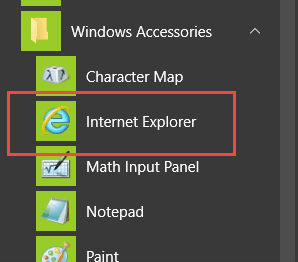Edge Office 365
By default, AD FS only supports SSO with Internet Explorer. However, you can easily enable support for Google Chrome, Firefox, and Edge.
Oct 19, 2020 The Office PWA’s are also being dropped, unwanted, onto the Start Menu. Office dropped onto Windows computers, in a new way. Remove the Office web apps. There are two ways to uninstall these Office web apps. In Edge go to Settings Apps or just edge://apps in the browser box. Then click the X on the right side of each installed app. Microsoft Edge Chromium is the newest browser from Microsoft. Currently in development, Edge Chromium has a brand new feature in the Canary release that integrates with Azure AD and Office 365. If you log into your computer with an Azure AD account, Edge Chromium will automatically detect and sign you into Edge with your Azure AD account.
As we know, Office 365 single-sign-on (SSO) between the on-premises and cloud is (typically) implemented using Active Directory Federation Services (AD FS).AD FS is a built-in service of Windows Server operating system.Typically AD FS is configured so that the extranet login is handled by forms-based authentication and intranet by Windows Integrated Authentication (WIA).This means that when a user is logging in from a domain joined computer in intranet, the browser logs in automatically (that’s why it is called single-sign-on).However, if user is logginh in from intranet using a browser which is not supported in AD FS, user will get the login prompt:
By default, AD FS is configured to perform WIA only with Internet Explorer.Luckily this can be easily changed to support also Firefox, Chrome, and Edge (Edge is supported by default in AD FS 4.0, i.e. Windows Server 2016).Below is the script to configure WIA in AD FS 3.0 (i.e. Windows Server 2012 R2) and AD FS 4.0.
Server side configuration

Note: The script needs to be run on all AD FS servers of AD FS farm.
Note: If you have problems with the Firefox SSO, you might need to turn off AD FS Extended Protection using the following script.
Client side configuration
If you are using Chrome or Edge, you don’t need to do any client side configuration as it is using same settings than IE.In Firefox, you need to do some client side configuration if you got the following authentication prompt:
Edge Office 365 Sync
For Firefox, you need to browse to about:config and add the address of your AD FS server (e.g. sts.contoso.com) to network.negotiate-auth.trusted-uris.
And that’s it, you are ready to go. Enjoy!
By default, AD FS only supports SSO with Internet Explorer. However, you can easily enable support for Google Chrome, Firefox, and Edge.
As we know, Office 365 single-sign-on (SSO) between the on-premises and cloud is (typically) implemented using Active Directory Federation Services (AD FS).AD FS is a built-in service of Windows Server operating system.Typically AD FS is configured so that the extranet login is handled by forms-based authentication and intranet by Windows Integrated Authentication (WIA).This means that when a user is logging in from a domain joined computer in intranet, the browser logs in automatically (that’s why it is called single-sign-on).However, if user is logginh in from intranet using a browser which is not supported in AD FS, user will get the login prompt:
By default, AD FS is configured to perform WIA only with Internet Explorer.Luckily this can be easily changed to support also Firefox, Chrome, and Edge (Edge is supported by default in AD FS 4.0, i.e. Windows Server 2016).Below is the script to configure WIA in AD FS 3.0 (i.e. Windows Server 2012 R2) and AD FS 4.0.
Server side configuration
Edge Office 365 Tab
Note: The script needs to be run on all AD FS servers of AD FS farm.
Note: If you have problems with the Firefox SSO, you might need to turn off AD FS Extended Protection using the following script.
Edge Office 365 Extension

Office 365 Download
Client side configuration
If you are using Chrome or Edge, you don’t need to do any client side configuration as it is using same settings than IE.In Firefox, you need to do some client side configuration if you got the following authentication prompt:
For Firefox, you need to browse to about:config and add the address of your AD FS server (e.g. sts.contoso.com) to network.negotiate-auth.trusted-uris.
And that’s it, you are ready to go. Enjoy!
